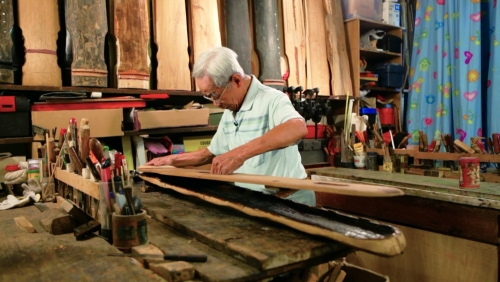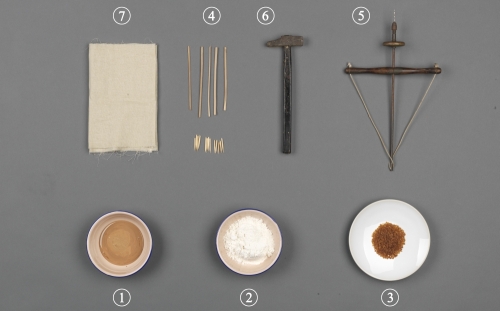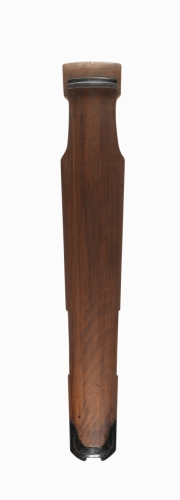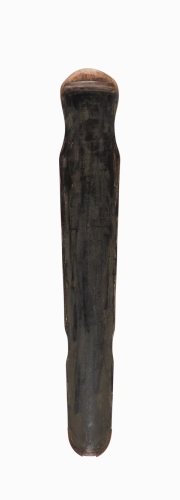-
History & Society
- Education in Pre-war Hong Kong
- History of Taikoo Sugar Refinery
- Hong Kong Products Exhibition
- Local Festivals Around the Year
- Post-war Industries
- Pre-war Industry
- The Hong Kong Jockey Club Archives
- Tin Hau Festival
- Memories We Share: Hong Kong in the 1960s and 1970s
- History in Miniature: The 150th Anniversary of Stamp Issuance in Hong Kong
- A Partnership with the People: KAAA and Post-war Agricultural Hong Kong
- The Oral Legacies (I) - Intangible Cultural Heritage of Hong Kong
- Hong Kong Currency
- Hong Kong, Benevolent City: Tung Wah and the Growth of Chinese Communities
- The Oral Legacies Series II: the Representative List of the Intangible Cultural Heritage of Hong Kong
- Braving the Storm: Hong Kong under Japanese Occupation
- A Century of Fashion: Hong Kong Cheongsam Story
Geography & EnvironmentArt & Culture- Calendar Posters of Kwan Wai-nung
- Festival of Hong Kong
- Ho Sau: Poetic Photography of Daily Life
- Hong Kong Cemetery
- Sketches by Kong Kai-ming
- The Culture of Bamboo Scaffolding
- The Legend of Silk and Wood: A Hong Kong Qin Story
- Journeys of Leung Ping Kwan
- From Soya Bean Milk To Pu'er Tea
- Applauding Hong Kong Pop Legend: Roman Tam
- 他 FASHION 傳奇 EDDIE LAU 她 IMAGE 百變 劉培基
- A Eulogy of Hong Kong Landscape in Painting: The Art of Huang Bore
- Imprint of the Heart: Artistic Journey of Huang Xinbo
- Porcelain and Painting
- A Voice for the Ages, a Master of his Art – A Tribute to Lam Kar Sing
- Memories of Renowned Lyricist: Richard Lam Chun Keung's Manuscripts
- Seal Carving in Lingnan
- Literary Giant - Jin Yong and Louis Cha
-
History & SocietyGeography & EnvironmentArt & Culture
-
View Oral History RecordsFeatured StoriesAbout Hong Kong Voices
-
Hong Kong MemoryThe Legend of Silk and Wood: A Hong Kong Qin StoryRecently Visited
Assembling
-
Step 5: Assembling
The chopped and hollowed top board and bottom board can be held together with a mixture of raw lacquer and flour, or with animal gum. After the boards have adhered to each other, a linen cloth can be glued onto and wrapped around the qin body, using an evenly applied layer of a mixture of raw lacquer and flour. This helps tightening the qin body and prevents the lacquer on the qin top from warping and cracking. Another way of assembly is to use bamboo nails to hold the top and bottom boards together at the corners of the forehead, the shoulders, the wings, the waist and the tail. The bamboo nails are inserted from the bottom upward. No adhesive is involved with this method.
-
Step 5: Assembling
Tools and materials
- Raw lacquer – to be mixed with flour to form an adhesive
- Flour – to be mixed with raw lacquer to form an adhesive
- Animal gum – to be melted in a double boiler and used as an adhesive
- Bamboo nails – made of old bamboo, each nail is about 2-3cm long. They are used to hold together the boards of a qin. They do not rust like metal ones in humid weather, and will not hurt the qin body.
- Drill – holes are first drilled on the qin bottom at suitable positions and then the bamboo nails are inserted into the holes. This prevents the bamboo nails from breaking off.
- Hammer – used for hitting the nails into the qin body
- Linen cloth – used for tightening the qin body, as well as for preventing the lacquer on the qin top from warping and cracking
-
Step 5: Assembling
A qin body with its top and bottom boards glued together
Maker: Poon Tak-lun (apprenticeship began in 1993)
Maker’s note: Learning to play the qin is already a difficult task, let alone mastering it. Commensurately, the art of qin making is probably one of the most difficult crafts in existence today. Master Choi Chang-sau began transmitting his qin making skills to students twenty years ago, and we were all very excited. It has been a pity that I have been always extremely busy at work and have yet to complete a single qin, with the most important lacquering stage waiting to be finished. As I learnt to make the qin, I have also acquired knowledge about material selection, qin shapes, and other aspects of the process. Many seemingly simple operations, such as drilling the string holes and threading the tuning tassels are in fact quite difficult. This qin is relatively small, and the resonance cavity belly is not large enough, meaning it will probably only produce sounds of a low volume. I am very anxious to complete this qin as quickly as possible, so that I can play with my teacher and my friends.
Copyright © 2012 Hong Kong Memory. All rights reserved. -









